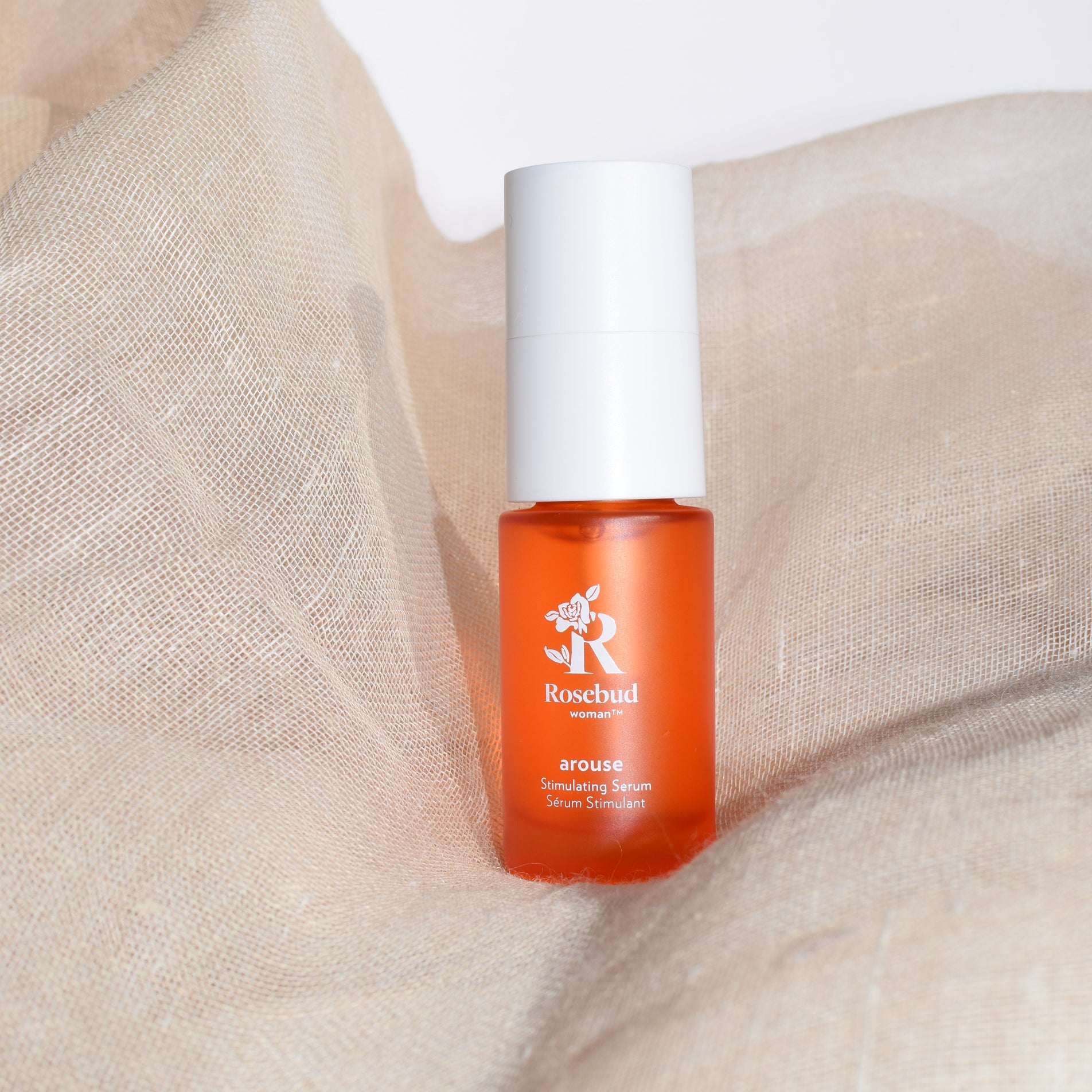How to Relax
Relaxation is vital to our creativity and full hearted living. It's also a prerequisite for some of our best sensual and sexual experiences, arousal and orgasm. Yet, our lives often have us habituated to chronic stress. Most stress isn’t an actual external threat in the moment. Most stress is borrowed from the future (worry), borrowed from the past (rumination and regret), or driven by pre-programmed responses to environmental cues. For example, a sudden movement isn't alarming for some people, while it can cause others to freeze. As Dr. Stephen Porges, the founder of polyvagal theory (the science of safety and social engagement) says, “The state of defense is incompatible with the state of relaxation.”
The good news is that we have all kinds of techniques to send the body signals that it’s okay to stand down and relax. We can also use herbs and supplements. By giving the body safety cues, we can override the unhelpful symptoms of habitual high alert anxiety.
In this article I talk about seven categories of scientifically proven safety cues you can give your body, and how to bring them into daily ritual. This, in turn, will invite a sense of magic and a sparkle, a glimmer of joy. It will help you be receptive, reverent, in your body, and turned on by life. Many of these are covered in our recently released book, The Nine Gifts.
1. Breathing
Breathing is the most accessible way of slowing down the heart rate and sending the body signals that everything is alright. The simplest calming breath technique is called “box” breath, or “wheel” breath: Inhale deeply, pause at the top of the inhale and briefly hold your breath; then exhale deeply and pause at the bottom of the breath. Doing this 10 times will shift your heart rate into a calmer, slower state. The ideal timing ratio is three to one: three counts each of inhaling and exhaling, and one count of holding on either end. If you really need to calm down—like if you’re hyper alert—then take a big, big inhale followed by a longer exhale (three counts in, six counts out). We have a demo of a relaxation breathing at this link.
2. Sound
The next technique of regulating the brain away from stress or anxiety is through music, or sound. There are multiple ways to do this:
- 60 bpm: Tuning your listening device to 60 bpm. If you’re on Spotify (or another music provider that has playlists), look for a playlist that says 60 BPM. You can find this in classical music and some pop music, in drone sounds, nature sounds, etc..
- Binaural beats: This second technique is only accessible wearing headphones, because the Hertz (Hz) patterns in the left and right ear are slightly differentiated—like a 5 or 10 Hz difference. As they come in the brain synchronizes them, and in this synchronization the brain “re-tunes” itself. But you have to have a good headphone set for the binaural beats to really work and do their job regulating the brain!
- Solfeggio frequencies: Various Solfeggio-related skills and activities can calm or stimulate the brain and nervous system. Try listening to music that’s tuned on the Solfeggio frequencies for relaxation (e.g., 396 Hz). Different Hz have different healing properties. Look on YouTube or Spotify, or even listen to this particular link for the Solfeggio frequencies.
- Centered Listening: Even the simple practice of deep listening in nature or in your room can be a way of coming into centered stillness and letting sound regulate your nervous system.
- Toning and Singing: Toning, humming, mantra and singing all calm the nervous system.
This doesn’t need to be an all-or-nothing thing. Though you might be able to make your whole home a sacred space, a single spot is all you need: even a small home altar can provide these cues, though more commonly a bedroom or workspace are places to make a sanctuary. When I had a lot of young children at home, I remembered a piece of advice from columnist The Flylady. She wrote that if you’re anxious, you can just take one spot and clear that out, create one place of rest. She called it “shining your sink”: Even if the dishes are piled up, there is always one clear spot—and that’s a place to start. Making your bed in the morning has a similar effect—this is something even Marine Corps sergeants understand to be true!
So start small. Create a ritual space, or practice daily rituals like lighting a candle or trimming fresh flowers. It’s a simple way of creating safety cues, and a call to beauty.
4. Ingestibles and Topicals
If these cues aren’t enough, or if you want to play with how different herbs impact you, I’ll share what I know about how plant medicines can help with relaxation.
Plants can help your nervous system calm down. I’m going to skip completely over cannabis, THC, and CBD, though they are well loved and legal in many states now. I’ll also skip alcohol, because it’s a negative drug on the whole body. I’ll just talk about lesser-known plants for relaxation.
One favorite of mine is Kanna, which is an extract of Sceletium Tortuosa. You can get this over the counter. It has a nice relaxation and uplift effect. Another is Sassafras. Sassafras bark, when boiled into a tea, is a euphoric and a relaxant. You can only buy Sassafras as a skin treatment or as potpourri, because Sassafras contains safrole, which is a regulated substance containing a similar molecule to MDMA (i.e., Ecstasy). You’re not going to have a MDMA experience with homemade Sassafras tea, just a gentle heart opening. If you live in a climate that supports growing Sass, you can harvest the root bark yourself.
Other common herbs for relaxation include lavender, chamomile, and passion flower. There’s another good one I particularly like, Kava Kava. While it is difficult to get authentic Kava Kava online, you can try a Kava extract.
California Poppy is another relaxant you can get from a herbal provider—or make on your own. If you are in California, or anywhere the California poppy grows on private land, you can pick a bunch—flowers, stems, leaves and all—and put it in a jar. Cover it with an alcohol base to sit for 3 to 6 weeks, and make a tincture.
Another plant that falls into the relaxant category is Valerian, which is sometimes known as a “natural Valium.” It's a GABA uptake inhibitor and great for sleeping (don’t take it with benzodiazepines!). I will also put in a plug for adaptogens (like mushroom blends).
If you’re in a place where healing psychoactive plants are legal—like the state of Oregon, and certain parts of Colorado or California—you might try microdosing psilocybin. If you are working on or processing big, trauma-driven anxiety or addiction issues, plant medicine therapists can work with you using higher doses of psilocybin, iboga, or other substances that help bypass the habitual mind and treat such trauma. Clinical trials on these therapies are nascent, but very, very encouraging.
In terms of topicals, I put Schisandra Chinensis in our body oil, and Ashwagandha, Damiana, Suma, and Maca into our Arouse Stimulating Serum. Look for more of these in upcoming new products. I also have a mushroom-based RELAX formula that I highly recommend, which we're only offering to testers currently.
5. Work with the Body: Rhythmic Movement, Masturbation, Self Massage, Bathing Rituals
These are all categories of activities that generate oxytocin, the “feel good hormone.” Watch this short video to see our 10 suggestions for daily things you can do to generate oxytocin.
6. Co-regulation: Calming with Others
We are social beings, and community makes a social organism. Cuddling, canoodling, breathing together, cooking together, singing together, laughing together, even merely being heard can calm the nervous system. If we get concerned or afraid, we can turn to each other and check in: Are we all alright? This is such an overlooked aspect of relaxation. One calm person can calm a room. One agitated person can agitate a room. By crafting families and communities that positively co-regulate, everyone benefits.
7. Putting it all together: Crafting Ritual
By creating and using rituals, you can get in touch with the part of you that is reverent for life—including your own physical embodiment. It benefits each of us individually, and softens the way we see each other. We invite a reawakening of the yin principle in the world: receptivity, nurturing, calmness, connection.
There are a lot of “not-safe” situations out there giving us cues right now: busy-ness, the pandemic, economic stress, climate change, along with the stresses of school, work, and many relationships and marriages. Whatever you can do to create ritual space and relaxation rituals in your own life will help you drop into the space for arousal. Through these practices, the best orgasms of your life are available.
In our emails and letters, blog posts, and videos that we’ll invite you to be part of, you’ll notice a thread running through them: ritual, and reverence.
We invite you to sink into true enjoyment, and incorporate ritual into your day. It can have far-reaching benefits. Our joy and centeredness uplifts everyone we touch.


























